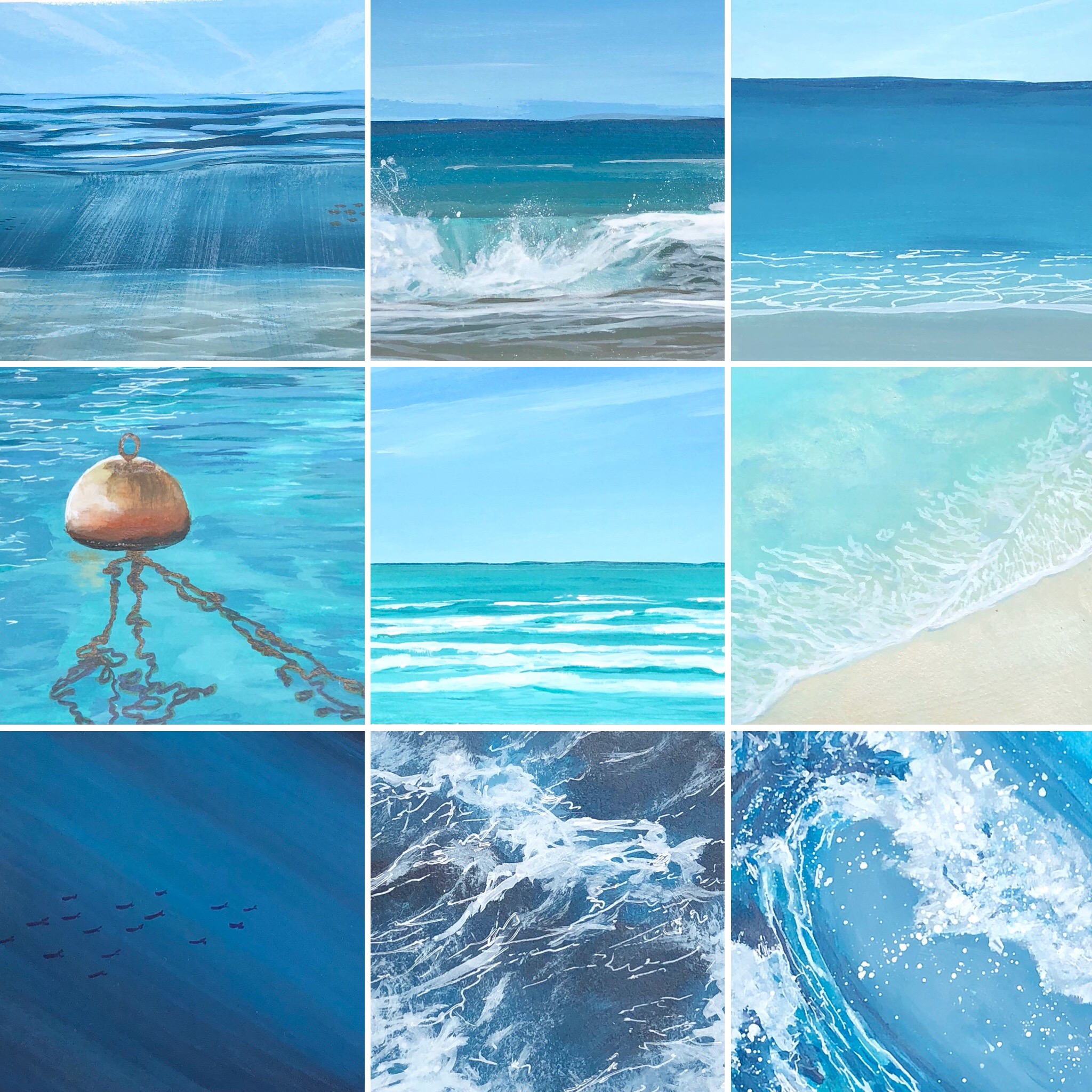DIY Art Resin Beach Stone Stack
- Kimberley Eddy

- Apr 9, 2021
- 3 min read
Happy springtime! I hope you are enjoying the longer days and sunshine. I wanted to pop in to say a quick hello and let you know about a really fun project. I will give you a step-by-step below in case you would like to try this Art Resin Stone Stack for yourself!

I have been a long time user of Art Resin. It is what gives my ocean resin artwork depth, dimension, and that amazing shine.

Sometimes I use moulds (Canadian/UK/Australian spelling ;) to create certain shapes like these below. These are available at Made in the Maritimes.
I had never tried making my own moulds. The folks at Art Resin reached out to me and asked me if I would like to give it a try. They very generously sent some Art Resin and a Mold Making Material kit. (They use the US spelling.) I knew I wanted to create something inspired by the sea. (Surprise, surprise!) I decided it would be fun to create a beach stone stack mould.
Here's the step-by-step that I promised:
I grabbed three stones from my collection along with my hot glue gun.

Then I glued the stones into a stack. Like this.
Next, I grabbed the Mold Making Material and an empty yoghurt container in which the stone stack would fit, with room enough around it on all sides to form the mould.

I used a second yoghurt container in which to mix equal parts of Part A and Part B of the Mold Making Material. Then I stirred both parts together really well.

One part is clear and the other is blue, so it is pretty easy to see when they are well combined.
I placed the stone stack into the bottom of the clean yoghurt container and slowly poured the Mold Making Material to entirely cover the stone stack.


It cures in only 3 hours. Also, this is non-toxic, has no VOCs, no BPA, no fumes, and no odor.
Here it is cured!
I removed the cured mould from the yoghurt container and then trimmed the bottom with a blade, as you can see below. This is how I will remove the stone stack, and where I will pour the resin.
Because of its convoluted shape, removing the stone stack from the mould took some yanking and pulling. Actually, it was a great test of the durability of the Mold Making Material.
Here is the finished mould with the stone stack removed.

Now for the fun part. Pouring the Art Resin!
Similar to the Mold Making Material, there are also two parts to the Art Resin; the resin and the hardener. I mixed them in equal parts and stirred until they were combined.
You can use a variety of materials to tint the Art Resin. I have used acrylic ink and soft bodied acrylic paints to tint this project. I poured small amounts of clear resin into small cups, and then add a tiny amount of ink, paint, etc to tint. (I reuse my cups over and over again to reduce waste in my studio.)
Then I filled the mould to the top little by little, alternating colours.
Art Resin takes 24 hours to cure to the touch, but 72 hours to reach its hardest cure. I waited the 72 hours to remove this resin stone stack from the mould.
The mould will take on whatever finish your original item has. If it's glossy, the mould will be glossy. Because the beach stones have a pebbled finish, my resin stone stack has the same finish. I think it almost looks like a stack of frosty sea glass. If you decide to give this a try please tag me or send it to me so I can see how yours turned out!
If you would like to learn even more about Art Resin, I am teaching an online workshop on May 2. We will use Art Resin to create a beautiful resin design on a bamboo cheeseboard. By signing up for the workshop, you will have access to my instructional How To Resin video, then we will have a LIVE Zoom class where we will complete the project together online. The registration fee includes materials. Please contact Argyle Fine Art Gallery with questions or to register!















































Love the ArtResin beach stone stack. It's beautiful. Thanks for sharing all of the steps involved and for being such an inspiration :)